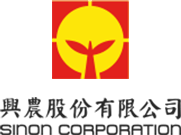Environmental-friendly
Management
SDGs

Material Topics
Water Resource Management, Water Effluent Management, Air Pollution Prevention, Waste Management
Water Resource Management, Water Effluent Management, Air Pollution Prevention, Waste Management
Impact Description
The water consumption, wastewater discharges, waste, and air pollutants generated from operations may impose environmental costs on the planet and affect the ecology and living quality. The Company values and actively promotes the Total Productive Maintenance (TPM) activities, to contribute to energy saving, waste reduction, and resource reuse, which not only enhance product quality and production efficiency, but also reduce risks associated with operations and minimize the negative impacts on society and the environment.
Corresponding GRI Standard Topic
GRI 303:2018 Water and effluents, GRI 305:2016 Emissions, GRI 306:2020 Waste
The water consumption, wastewater discharges, waste, and air pollutants generated from operations may impose environmental costs on the planet and affect the ecology and living quality. The Company values and actively promotes the Total Productive Maintenance (TPM) activities, to contribute to energy saving, waste reduction, and resource reuse, which not only enhance product quality and production efficiency, but also reduce risks associated with operations and minimize the negative impacts on society and the environment.
Corresponding GRI Standard Topic
GRI 303:2018 Water and effluents, GRI 305:2016 Emissions, GRI 306:2020 Waste
Strategy
- Combine SNPM activities (Sinon-Productive-Management) with Quality, Health, Safety, and Environment (QHSE) improvements, and increase manufacturing stability using SPC method to ensure factory safety and product quality.
- Develop a strong management mechanism to ensure that the suppliers meet the Company’s standards for environment, social, and management. Pursue environmental-friendly procurement to reduce resource waste.
- Focusing on energy and carbon emissions, water resources, waste management, and renewable material recycling, the Company has introduced a circular business system and established an energy management mechanism to achieve its energy-saving, waste-reduction, and carbon-reduction goals.
Responsibilities and Appeal Mechanism
- The Occupational Health & Safety Committee and SNPM Promotion Committee reviews the environmental business progress outcomes and improvement measures each quarter.
- Established the “Procedures Guide for Consultation and Communications Management”. The Construction & HSE management Department is responsible for related business promotion and handling of communications and deficiencies improvements for related issues to environment.
Energy and Carbon Emission Management
| Medium- and long-term goals |
|
| Short-term goals & 2023 Goal achievements |
The group companies have gradually introduced ISO 14064-1 GHG guidance to enhance its corporate carbon inventory capability
Completed the first phase of GHG inventory and information assurance for the parent company
Develop a carbon inventory and related systems, and gradually establish a carbon emissions compliance management mechanism Annual electricity saving rate 1% Annual electricity saving rate 1.52%
Installation of renewable energy equipment
Continue to evaluate the installation of self-generated solar energy photovoltaic equip-ment in the plant buildings
|
| Note 1: The scope covers the parent company’s Wang-Tien Factory area (Wang-Tien Factory, Wang-Tien 2nd Factory, Wang-Tien 3rd Factory, Biological Factory, Da-Du Factory), Zhangbin Plant, and includes the sites (employee dormitories, warehouses, experimental farms) where the Company has operational control rights. | |
Water Resource Management
| Medium- and long-term goals |
|
| Short-term goals & 2023 Goal achievements |
Implement water consumption improvement and water recycling programs
Wang-Tien Factory area reclaimed 7,068 metric tons of water, an increase of 400% from 1,414 metric tons in 2022 (mainly due to the effluents from backwashing of water treatment equipment, which
amounted to 5,609 metric tons) Continue to optimize the management mechanism, ensure that water quality of effluents meets the standards, and reduce emissions by 17.5%
Wang-Tien Factory established a PLC wastewater treatment - real time monitoring and automatic control mechanism
• Effluents from Wang-Tien Factory were reduced by 18.7% |
| Note 2: The scope covers the parent company’s Wang-Tien Factory area (Wang-Tien Factory, Wang-Tien 2nd Factory, Wang-Tien 3rd Factory, Biological Factory, and Da-Du Factory). | |
- Waste Management and Circular of Renewable Materials
| Medium- and long-term goals |
|
| Short-term goals & 2023 Goal achievements |
Continue to optimize the management mechanism and reduce air pollutant emissions
The air pollutant emissions of Wang-Tien Factory area decreased by 10.26% compared to 2022 Annual waste recycling rate 45%
Annual waste recycling rate of Wang-Tien Factory area 58%. Reuse of process by-products
Approximately 194 metric tons of solvents were recycled; 597 metric tons of salts were recycled, and the waste sulfuric acid was converted into 7.5% aluminum sulfate, yielding 715 metric tons of output for
reuse. |
| Note 2: The scope covers the parent company’s Wang-Tien Factory area (Wang-Tien Factory, Wang-Tien 2nd Factory, Wang-Tien 3rd Factory, Biological Factory, and Da-Du Factory). | |


